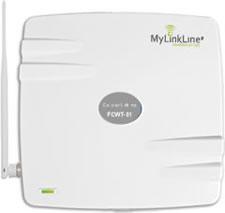School District Cost Reduction Strategies | 16 Examples
For school districts, managing facility operating costs while providing a conducive learning environment is a complex balancing act. Tight budgets and the need to uphold educational standards require innovative strategies to optimize resource allocation. In this comprehensive guide, we will explore practical approaches that school districts can adopt to reduce operating costs without compromising the quality of education or student well-being.
1. Energy-Efficient Lighting and Systems
Upgrading to energy-efficient lighting, such as LED bulbs, and implementing smart HVAC systems can yield significant savings. Timely maintenance, regular filter changes, and programmable thermostats help minimize energy consumption and costs.
2. Eliminate Conventional Elevator Telephone Landlines
If your school district has elevators, your cost reduction strategies should include making the switch to cellular phone lines. Traditional landlines are going away and you can count on the reliability of cellular elevator phone lines to maintain a communication path between your elevator phones and the monitoring service. You will also receive the benefits of increased reliability and substantial savings over conventional monthly landline charges.
To learn more about cellular phone lines for school districts click here
3. Renewable Energy Integration
School district cost reduction strategies should include leveraging the use of solar panels or wind turbines to generate clean energy. Investing in renewable sources not only reduces energy bills but also demonstrates a commitment to environmental stewardship.
4. Water Conservation Measures
Implement water-saving technologies, including low-flow fixtures and sensors. Regularly check for leaks and educate students and staff about responsible water usage.
5. Optimal Space Utilization
Analyze space utilization patterns to maximize room occupancy and reduce heating, cooling, and lighting expenses. Unused spaces can be repurposed or shared to avoid unnecessary costs.
6. Sustainable Landscaping
Use native plants and drought-resistant landscaping to reduce water usage and maintenance costs. Incorporating outdoor classrooms and green spaces can enhance the learning environment while saving resources.

7. Energy-Efficient Appliances
Choose energy-efficient appliances for school cafeterias and staff rooms. Modern appliances consume less energy, leading to long-term savings.
8. Remote Monitoring and Building Automation
Implement building automation systems that allow remote monitoring and control of systems like lighting, HVAC, and security. This ensures efficient operation and enables quick responses to issues.
9. Regular Maintenance and Preventive Care
School district cost reduction strategies include adopting a proactive maintenance approach to prevent costly breakdowns. Scheduled inspections and preventive measures can extend equipment lifespan and minimize repair expenses.
10. Waste Reduction and Recycling
Educate students about waste reduction and recycling practices. Implement recycling programs and engage students in eco-friendly initiatives to reduce waste disposal costs.
11. Green Building Practices
Incorporate sustainable design principles when constructing or renovating school buildings. Features like proper insulation, energy-efficient windows, and natural lighting contribute to long-term Cost reduction strategies for school districts
12. Innovative Classroom Technologies
Integrate smart classroom technologies that optimize energy usage. Automated lighting and temperature control systems can reduce energy waste during periods of inactivity.
13. Behavioral Change Programs
School district cost reduction strategies should also include empowering students and staff to adopt energy-saving behaviors. Organize awareness campaigns, competitions, and challenges that encourage responsible energy usage.
14. Shared Services and Collaborations
Collaborate with other school districts to share resources, ideas, and best practices. Joint procurement and shared services can lead to cost savings and operational efficiencies.
15. Professional Development
School district cost reduction strategies should also include training the maintenance staff on energy-efficient practices and technologies. Well-trained personnel can identify opportunities for improvement and implement energy-saving measures effectively.
16. Continuous Monitoring and Data Analysis
Implement energy and resource monitoring systems to track consumption patterns. Analyze data to identify trends and areas for improvement, enabling informed decision-making.
School District Cost Reduction Strategies | Conclusion
School district cost reduction strategies require a multifaceted approach that involves technology, education, collaboration, and a commitment to sustainability. By implementing these strategies, school districts can allocate resources more efficiently, create greener learning environments, and provide students with a quality education while reducing their carbon footprint. As education leaders, school


